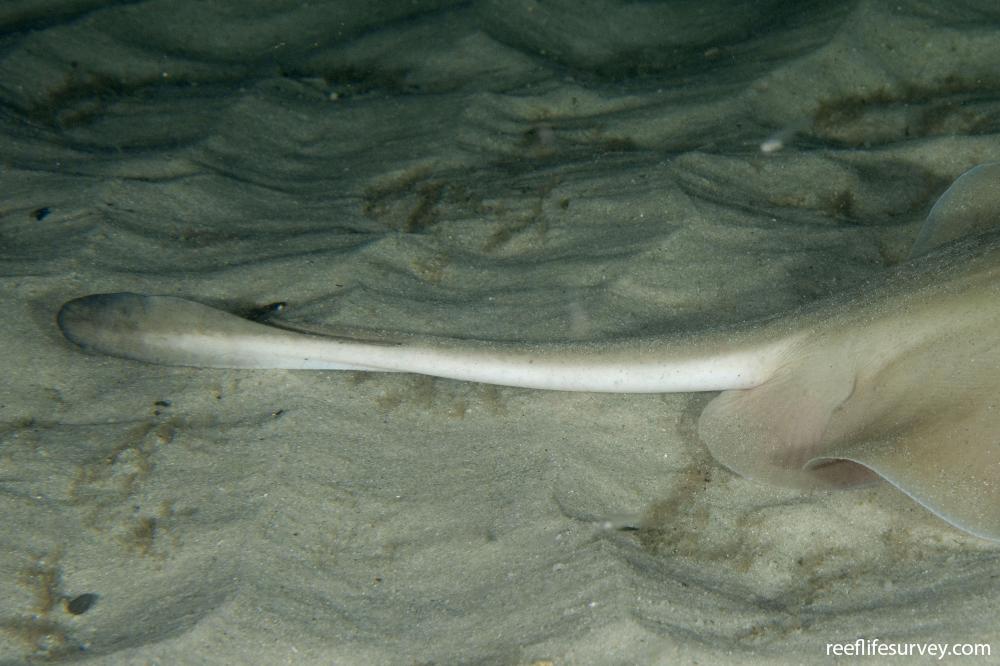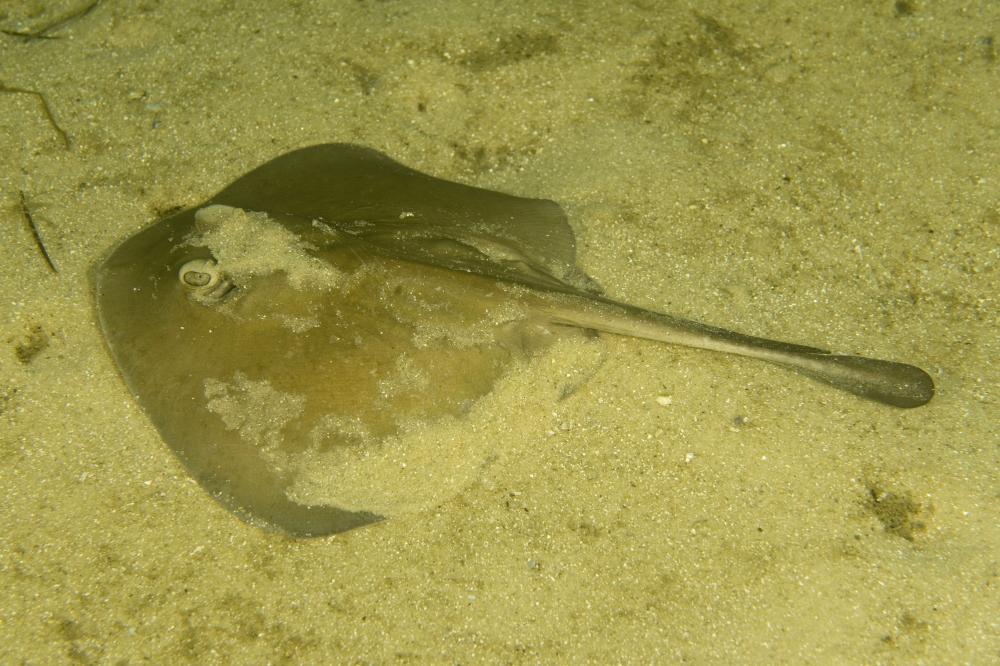Trygonoptera imitata
Eastern Shovelnose StingareeSimilar Species
Same Genus
Distribution
Temperate Australasia
Description
Medium-sized ray with a dark brown to grey upper surface. A similar stingaree in shallow NSW waters, the common stingaree Trygonoptera testacea, differs in possessing a very small dorsal fin in front of the tail spines, although in some individuals this is difficult to see as it may only be the size of a skin fold. See entry for T testacea for photos showing the skin flap.
T. mucosa is almost identical, but tends to be smaller and only occurs in South Australia and Western Australia.
Information
Max Size: 69 cm
Sea Temperature Range: 13.7-22.9°C
Depth: 0-120m
Habitat Generalization Index: N/A
Also referred to as the SGI (Species Generalisation Index), this describes the habitat niche breadth of the species. Species with values less than 15 are found in a relatively narrow range of reef habitat types (specialists), while those over 25 may be found on most hard substrates within their range (generalists). Learn more here.
Conservation and Rarity
IUCN Status: Near Threatened
Occurrence: Frequent (11.8% of sites)
Occurrence describes how often the species is found on surveys within its distribution. It is calculated as the % of reef sites surveyed by RLS divers across all the ecoregions in which the species has been observed
Abundance: Few (2 per transect)
Abundance is calculated as the average number of individuals recorded per RLS transect, where present.
Edit by: GJ Edgar. 2008. Australian Marine Life. New Holland, Sydney
















